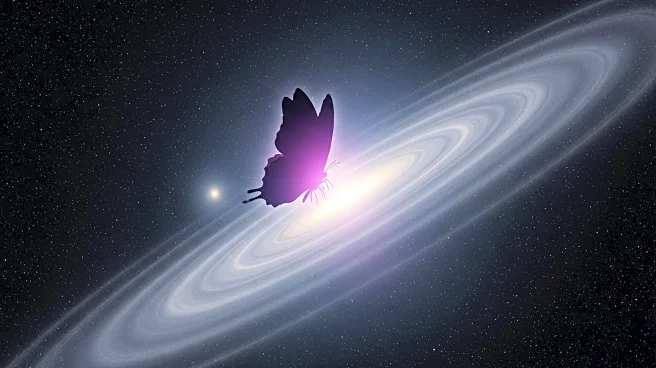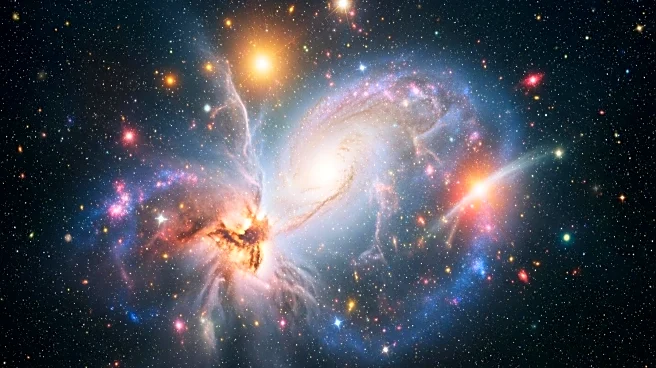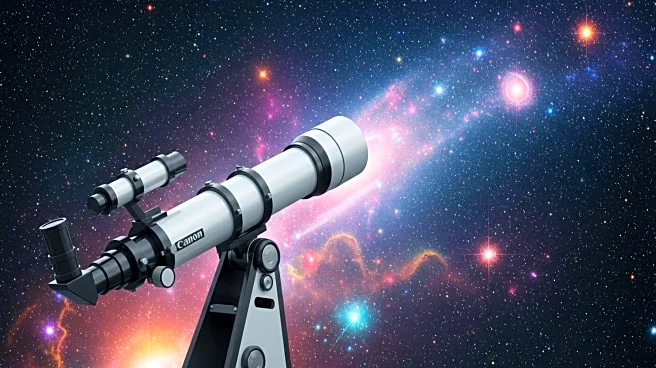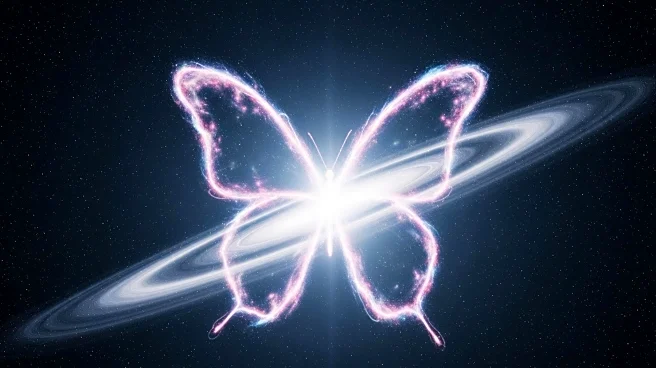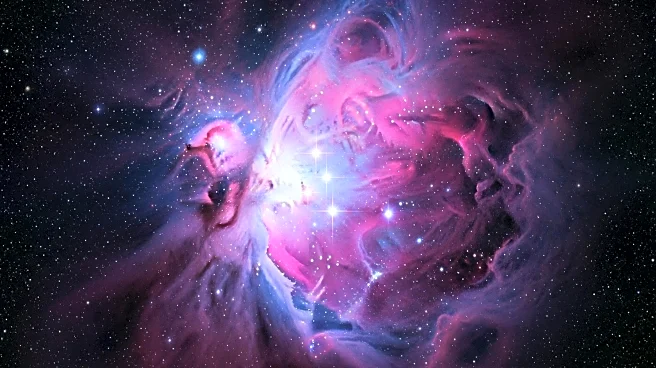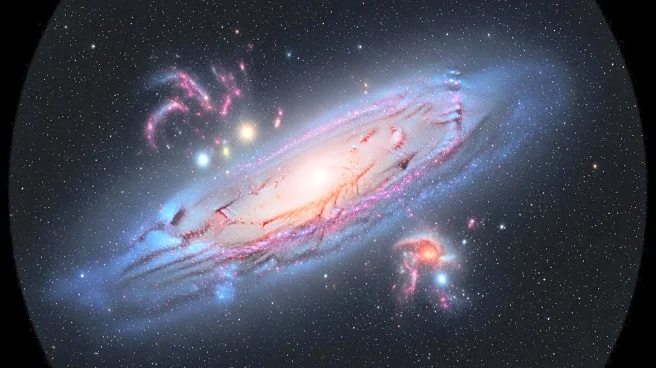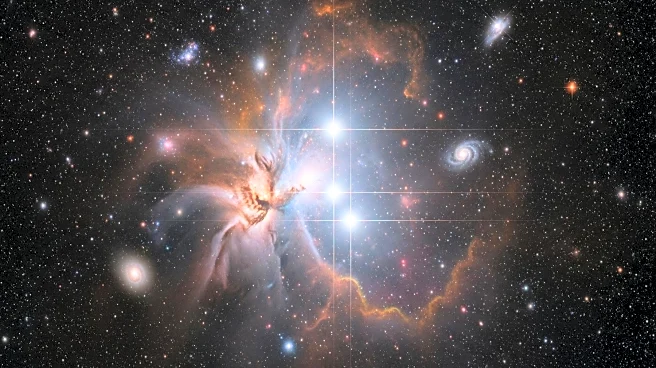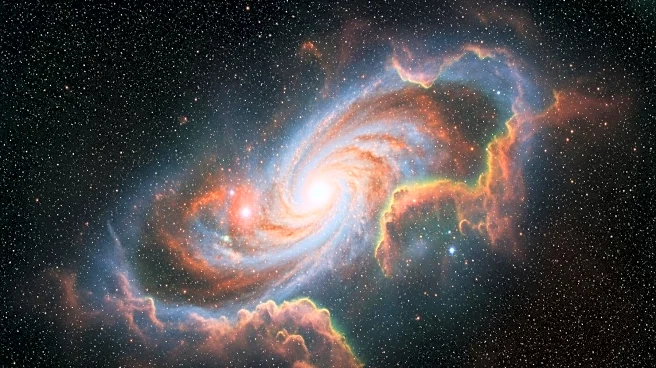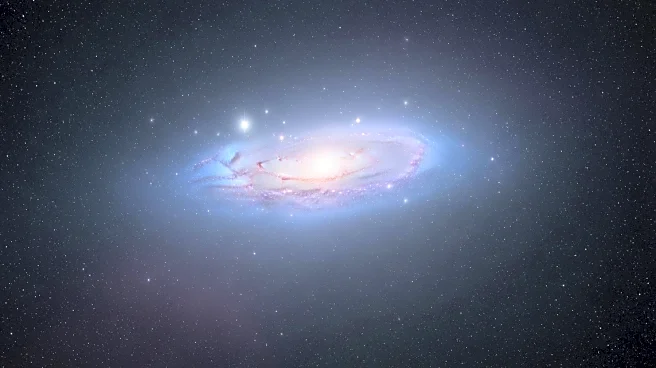What's Happening?
The James Webb Space Telescope (JWST) has captured a striking image of a star known as IRAS 04302+2247, or the 'Butterfly Star,' located 525 light-years away in the Taurus Molecular Cloud. This star is enveloped in a massive protoplanetary disk, a dense ring of gas and dust where planets are likely forming. The image, a combination of optical data from the Hubble Space Telescope and infrared data from JWST's Near Infrared Camera and Mid-Infrared Instrument, reveals a dark, dusty lane dividing the nebula. This lane blocks the star's light while surrounding gas and dust scatter it, creating a butterfly-like appearance. The protoplanetary disk is approximately 40 billion miles across, several times wider than the solar system.
Why It's Important?
This discovery provides valuable insights into the processes of planet formation and the conditions that may have shaped our own solar system billions of years ago. By studying the thickness and dust distribution in protoplanetary disks, scientists can better understand how planets accumulate mass and form. The image also highlights the capabilities of the JWST in revealing cosmic phenomena invisible to optical telescopes, thus advancing our knowledge of star and planet formation.
What's Next?
Further analysis of the 'Butterfly Star' and its protoplanetary disk could lead to new discoveries about the formation of planets and the evolution of star systems. Researchers may continue to use the JWST to explore other star-forming regions, potentially uncovering more about the early stages of planetary development.
